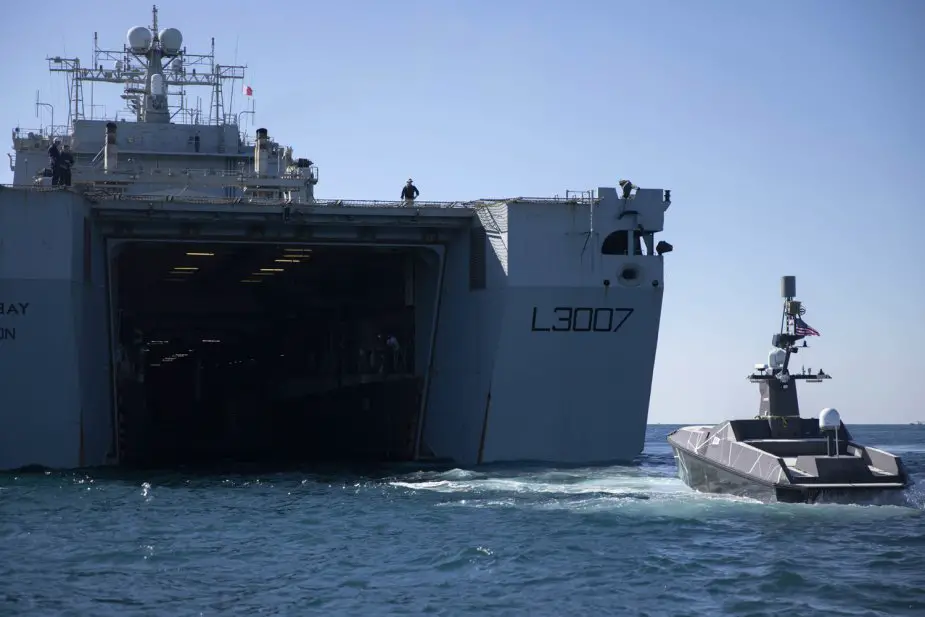Breaking news
Royal Navy completes IMX22, the largest ever test of robot naval tech.
According to information published by the Royal Navy on March 2, 2022, new tech lined up with traditional warships and aircraft in the largest naval exercise ever to test crewless systems in the Middle East, part of a huge international test of maritime power in the region.
Follow Navy Recognition on Google News at this link
 RFA Lyme Bay and MAST-13 robot boat (Picture source: Royal Navy)
RFA Lyme Bay and MAST-13 robot boat (Picture source: Royal Navy)
More than 60 countries, 50 ships, 80 uncrewed systems – airborne, seaborne and underwater – from ten nations – and 9,000 personnel took part in the combined International Maritime Exercise / Cutlass Express.
Spread over two and a half weeks and a vast area – the Red Sea, Gulf, Horn of Africa and eastern seaboard of Africa – it’s one of the largest, longest and most varied exercises ever staged by nations with an interest in the stability and security of the Middle East region.
The goal was to enhance partnerships and ensure seamless interaction and cooperation between participants of many languages, with different systems and different ways of working.
Leading Combined Task Force North – operating in the Gulf – was the bulk of the RN’s presence in the region: minehunter command ship RFA Lyme Bay, with her ‘flock’ – HM Ships Bangor, Chiddingfold and Penzance – plus frigate HMS Montrose and vessels from other navies, including Japan, the USA and Gulf nations.
Lyme Bay proved key not just as a hub for the minehunters, but also some of the autonomous/crewless systems being put through their paces.
The RN brought Puma drones, courtesy of 700X Naval Air Squadron, plus L3Harris MAST-13 robot boat, while the Americans rolled out the Devil Ray, the MARTAC T-38, capable of speeds in excess of 80 knots, can pull turns at six times the force of gravity (6G) and either gather intelligence or serve as a launchpad for other unmanned systems.
Puma weighs in at only seven kilograms and can be operated anywhere in the world from vessels with or without a flight deck. There’s no need to rely on larger, more expensive, crewed helicopters and aircraft: a Royal Navy Merlin or Wildcat helicopter, for example, requires at least a ten-strong team to crew and maintain it. Puma needs just three sailors.
700X from Culdrose have tested and operated Pumas extensively in the UK, in the Mediterranean, and Arctic. On IMX22 Puma offered those at sea and on the ground a unique perspective of the exercise as it unfolded.
MAST-13 is similar to a water-borne drone. At 13 metres long, the boat manoeuvre around a naval task force, either autonomously or remotely controlled from a rig. It could be used to identify threats such as mines or collect intelligence on enemy ships, and then feed this information back to Navy ships.




























